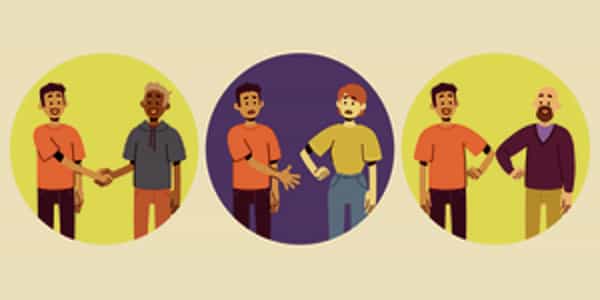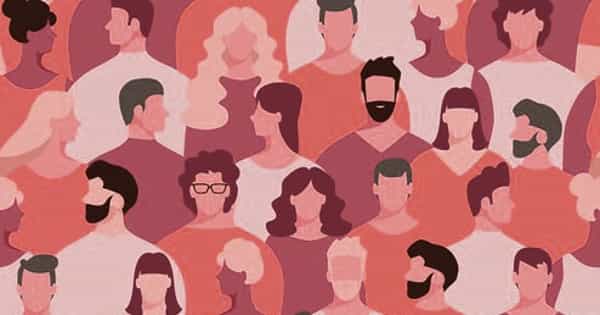How do social norms evolve? To investigate this phenomenon, robotic engineers and marketing scientists collaborated, combining online experiments and statistical analysis into a mathematical model that demonstrates how a committed minority can influence the majority to change long-standing practices.
Handshakes have been replaced as a greeting by fist or elbow bumps in the last year. It demonstrates that long-held social conventions can not only change but do so abruptly. But how does this occur? The University of Groningen’s robotic engineers and marketing scientists collaborated to investigate this phenomenon, combining online experiments and statistical analysis into a mathematical model that demonstrates how a committed minority can influence the majority to change long-standing practices. The findings, which were published in Nature Communications, may help to encourage more sustainable behavior.
How does complex human behavior emerge? This is studied in a variety of ways, the majority of which rely on a large amount of data from observations and experiments. Ming Cao, Professor of Networks and Robotics at the University of Groningen’s Faculty of Science and Engineering, has studied complex group behavior in robots using agent-based simulations and other methods. These agents adhere to a set of simple rules, often inspired by nature, which can result in realistic complex behavior.
‘Swarming birds or schools of fish are a good example’, Cao explains, ‘their movements can be reproduced by agents that follow a few simple rules on keeping a certain distance and heading in the same direction as their neighbours.’
Researchers combine online experiments and statistical analysis into a mathematical model that shows how a committed minority can influence the majority to overturn long-standing practices.
Game
In parallel, the Marketing research group at the Faculty of Economics and Business, led by Dr. Jan Willem Bolderdijk, Dr. Hans Risselada, and Prof. Bob Fennis, has conducted a variety of human behavior research projects, but not many of them have used agent-based models. Following a discussion with Cao and his colleagues, both groups saw the potential for such models. As a result, marketing Ph.D. student Zan Mlakar and two post-doc researchers in Cao’s group, Mengbin Ye and Lorenzo Zino, collaborated to create an online experiment to collect data on the social diffusion of new behavioral trends.
They created an online game in which 12 players take on the role of board members of a company that is planning to launch one of two potential products. The participants must vote on which product will be launched. The snag is that the decision must be made unanimously. Participants are not allowed to discuss their choice, they vote in 24 consecutive rounds, and they only see the vote distribution at the end of each round. If the participants reach unanimity, they will be rewarded.

Rules
Unbeknownst to the participants, two to four of the participants in the groups studied were computer bots programmed to stick to their preferred path. ‘If the majority voted for product A in the first round, the bots were programmed to vote for B in order to overturn the majority,’ says Ye, who is now a Senior Research Fellow at Curtin University in Australia. Meanwhile, the votes of the human participants were recorded across all of the rounds studied. Over 20 of these online game rounds resulted in a unanimous vote, with humans eventually siding with the bots to vote for product B. The results of all the games were then analyzed to look for patterns in the voting decisions of the human participants.
‘In quite a few cases, we saw a delay before the votes began to change, but when they did, the group would reach unanimity in just a few voting rounds,’ says Ye. The overall voting behavior could be replicated in an agent-based model using three simple rules: do what the majority does, stick to your previous decision, and follow the trend. These rules are known as group coordination, inertia, and trend-seeking in the literature,’ explains Ye. ‘They have been studied separately in human behavior, but never in one model; this combination was critical in capturing social change.’
The results of the experiments and simulations show that when the influence of a committed minority reaches a certain threshold, new conventions can emerge unexpectedly. As a result, a small group of ‘activists’ can alter social norms. ‘However, this only occurs if the minority is also able to influence others in their network,’ says Cao. And this is dependent on the level of risk-taking among the other voters.’ The team is now looking into what might enhance or inhibit this risk-taking behavior. ‘We now have a solid framework and a model that can be used to investigate environmental factors that may cause people to have greater inertia or be more susceptible to trends,’ says Ye.
The three basic rules may be useful in directing the behavior of large groups. ‘Of course, we can’t control people,’ Cao emphasizes. ‘However, we can provide guidelines, such as how to nudge people to change their behavior.’ This could be useful in the energy transition or in convincing people to eat less meat. ‘Governments already spend money to persuade people to adopt more environmentally friendly behavior. Our research can assist them in making better use of their resources.’















